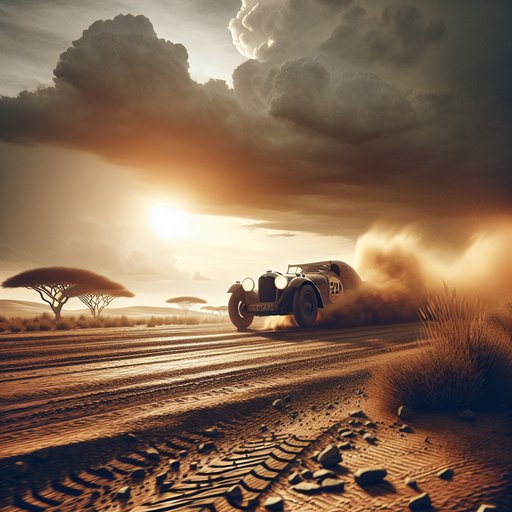
Born as the 1953 Coronation Safari and later a World Rally Championship classic, the Safari Rally forged its reputation by combining extreme distance, unpredictable weather, rough terrain, and minimal margin for error. It demanded durability from cars and relentless discipline from crews.
The Safari Rally began in 1953 as the Coronation Safari, traversing Kenya, Uganda, and Tanganyika (later Tanzania). It evolved into the East African Safari Rally, joining the inaugural WRC season in 1973. Unlike European events with short special stages, the Safari traditionally ran over thousands of kilometers on public roads, measured against time controls rather than closed-stage sprints, and often continued day and night. Terrain and climate defined the challenge.
Crews faced searing heat in the Rift Valley, sudden equatorial storms, deep mud in black cotton soils, and fine volcanic dust known as fesh-fesh that penetrated filters and blinded drivers. Wildlife, livestock, and regular traffic could appear without warning. Attrition rates were notorious—many editions saw fewer than a third of starters reach the finish—so sustained, measured pace and mechanical sympathy often beat outright speed. Cars were re-engineered for endurance.
Teams raised ride height, fitted extensive underbody protection, reinforced suspension arms and hubs, and used heavy‑duty dampers and springs. Additional filtration and sometimes raised intakes helped engines breathe in dust and ford water crossings, while sealed electrics and breathers protected vulnerable components. Radiator screens, stone guards, and robust wheels with strong sidewalls were standard; multiple spare wheels and extended-range fuel systems were common. Operations were just as specialized.
Before modern restrictions, chase cars shadowed competitors with spares, and helicopters scouted weather, hazards, and service points. Navigation relied on detailed road books and maps rather than pacenotes, with time controls dictating average speeds and penalties. Co-drivers managed fatigue, timing, and route decisions, while mechanics executed rapid, repeated rebuilds—wheel bearings, dampers, and suspension bushings could be treated as consumables rather than lifetime parts. Manufacturers treated a Safari win as proof of real-world durability.
Peugeot’s 404/504 sedans, Datsun/Nissan’s 240Z and later Violet/160J, and Toyota Team Europe’s Celicas built reputations here. Local expertise mattered: Shekhar Mehta set the benchmark with five victories, and Joginder Singh was another multi-time winner. Later WRC champions—from Juha Kankkunen to Carlos Sainz and Colin McRae—targeted the event as a distinct challenge, adapting driving style and car setup to survive its brutality. After leaving the WRC in the early 2000s due to cost and safety demands, the Safari returned in 2021 as Safari Rally Kenya with modern closed stages around Naivasha.
Although the format now aligns with contemporary WRC regulations, rocky tracks, ruts, rainstorms, and fesh-fesh still test cooling, suspension, and tires more than outright power. The event’s legacy endures as rallying’s definitive examination of endurance, preparation, and teamwork—where finishing remains an achievement in itself.












